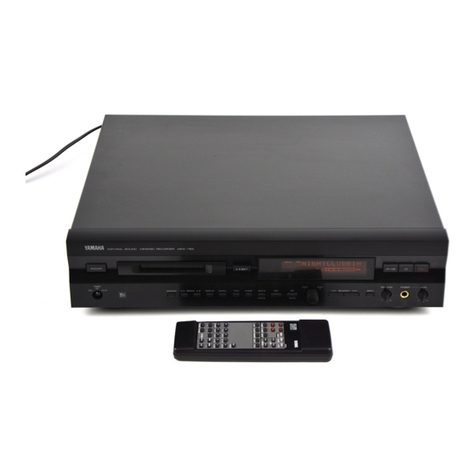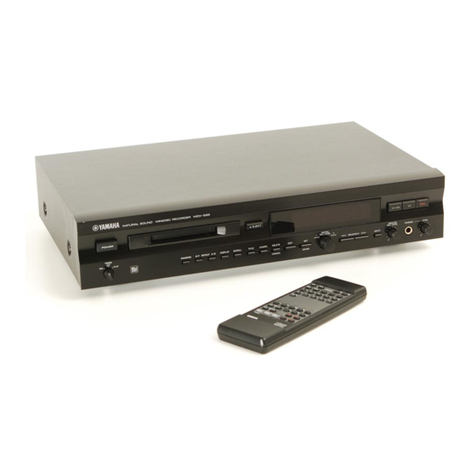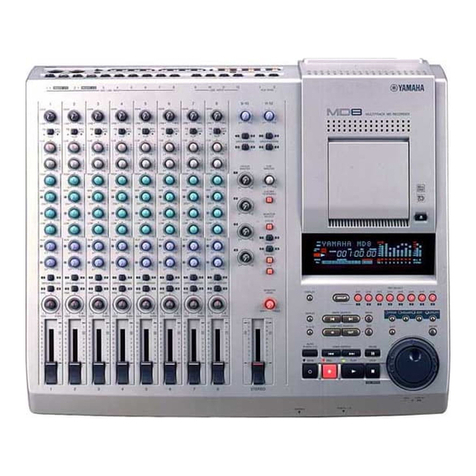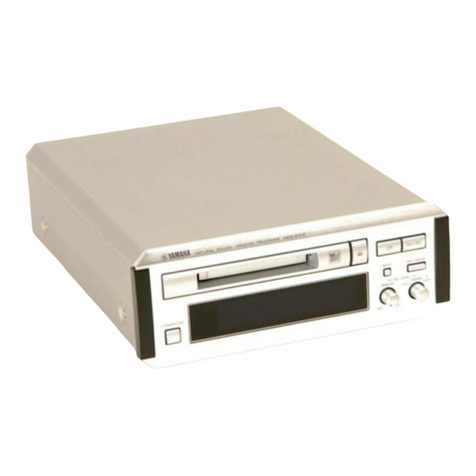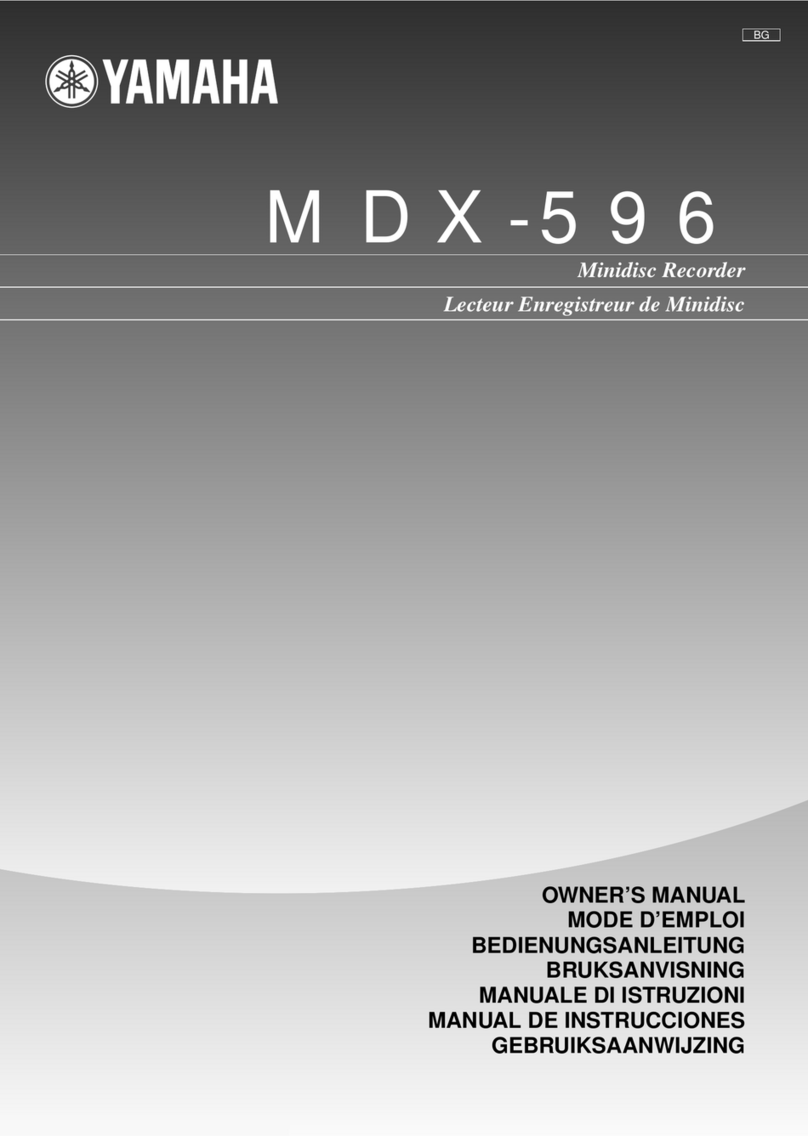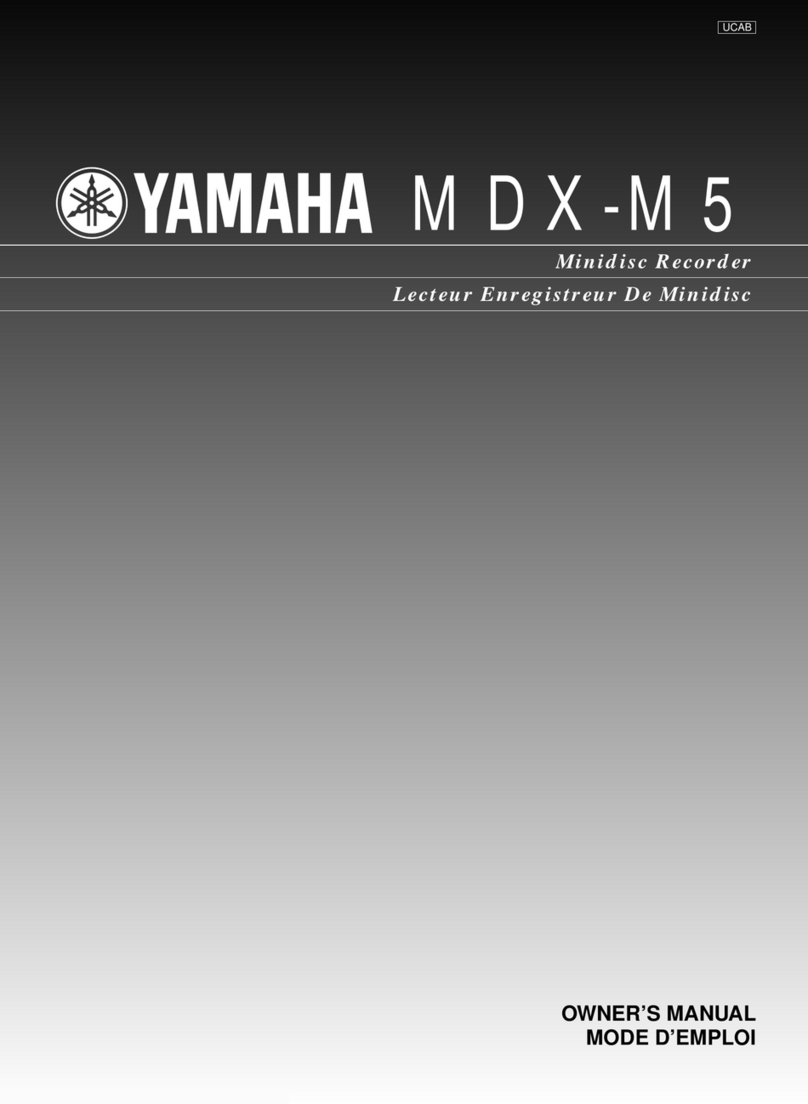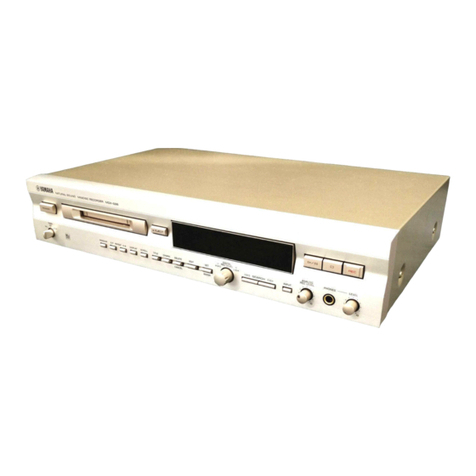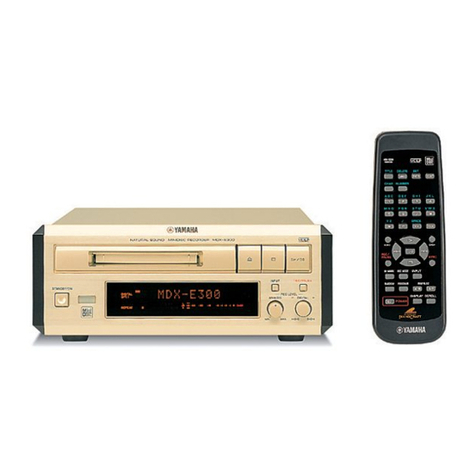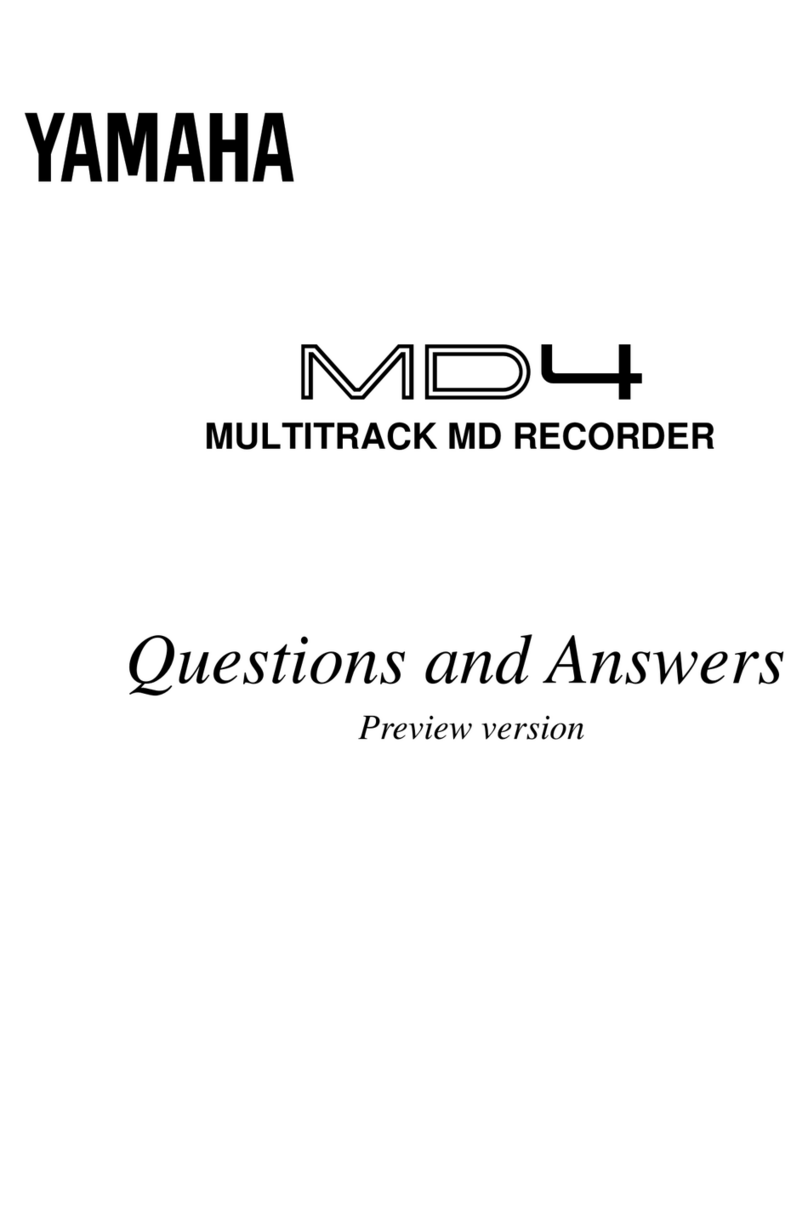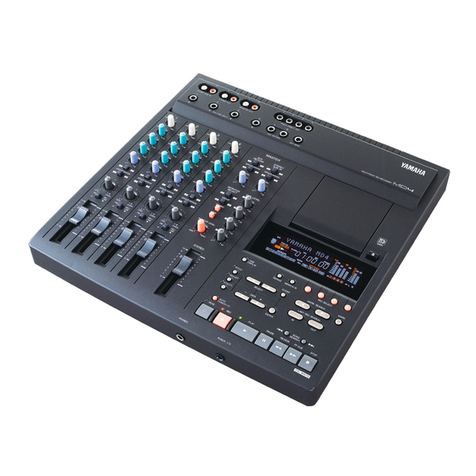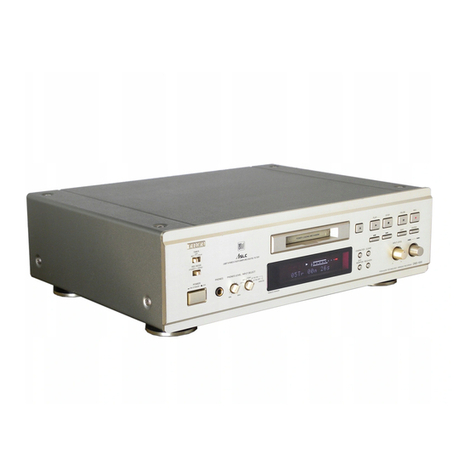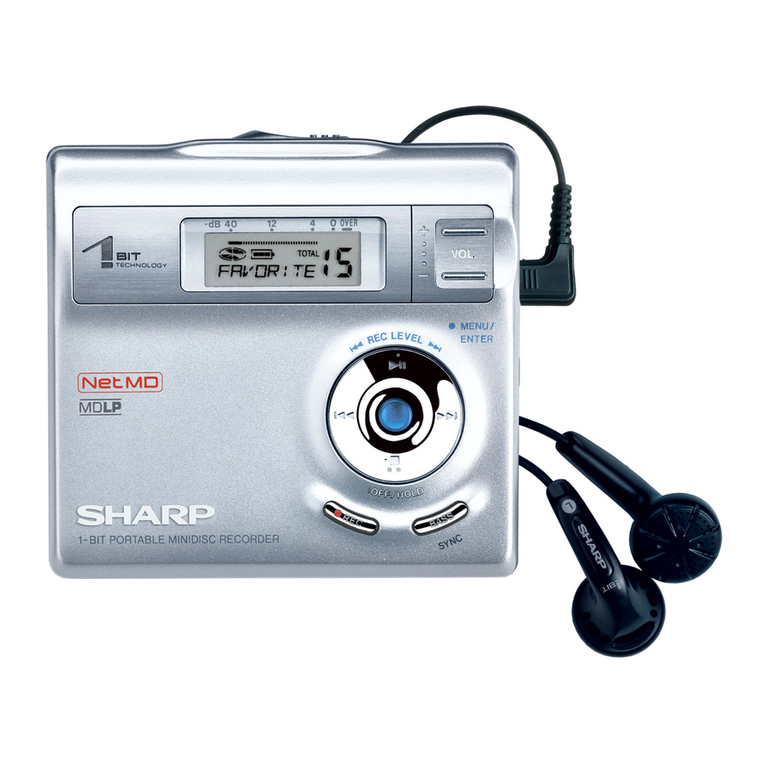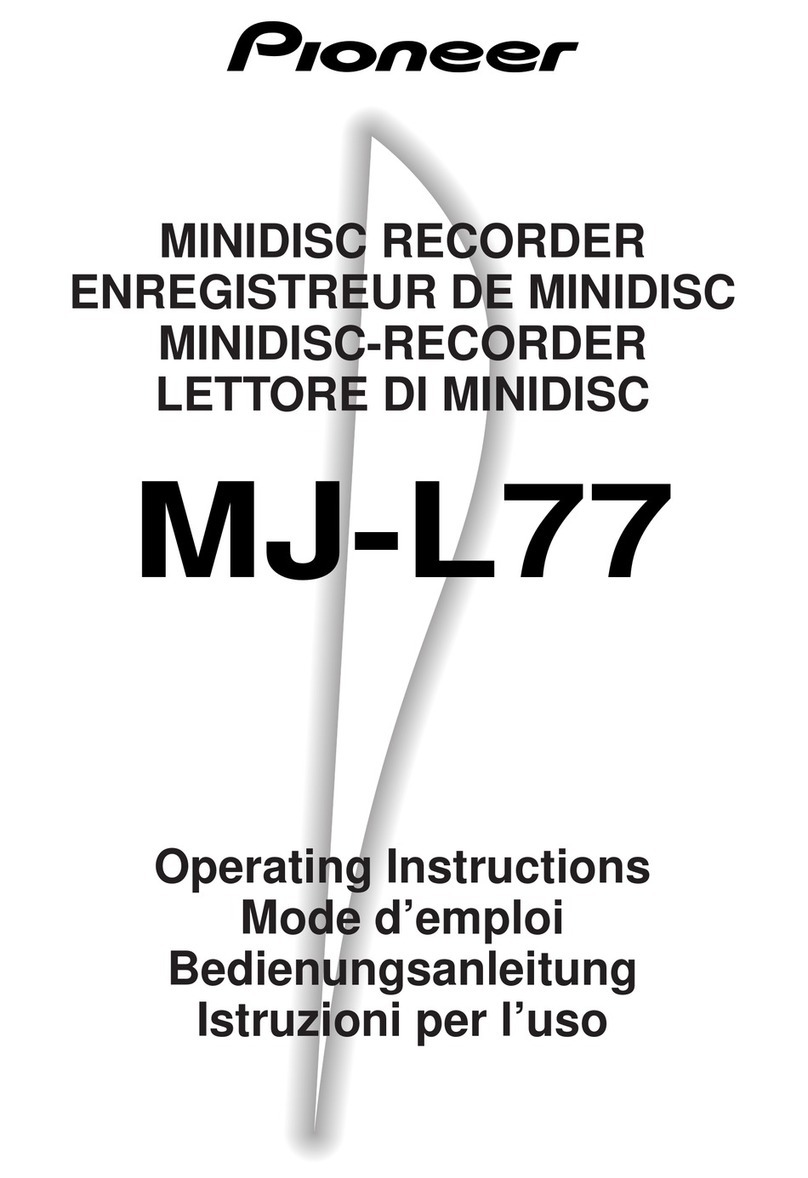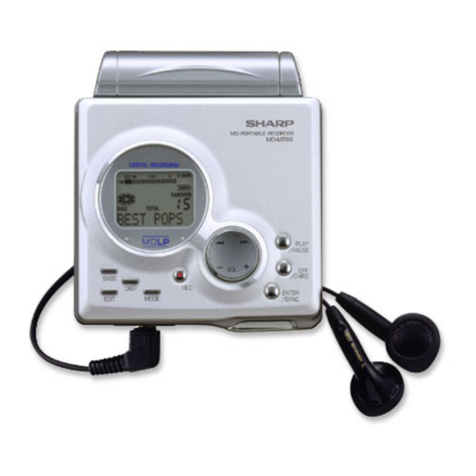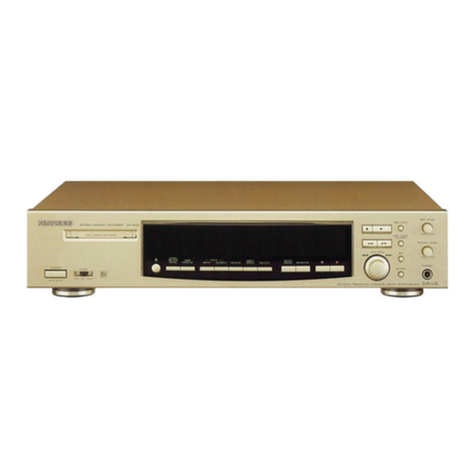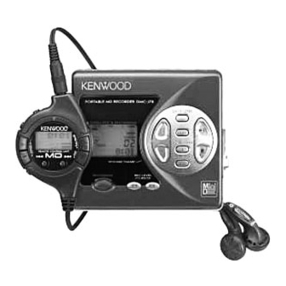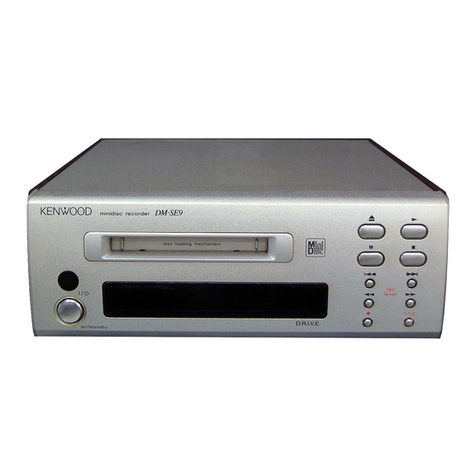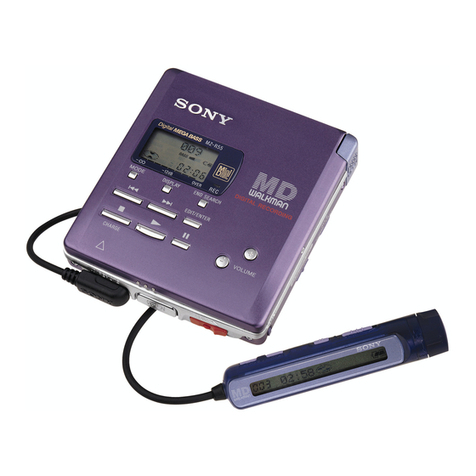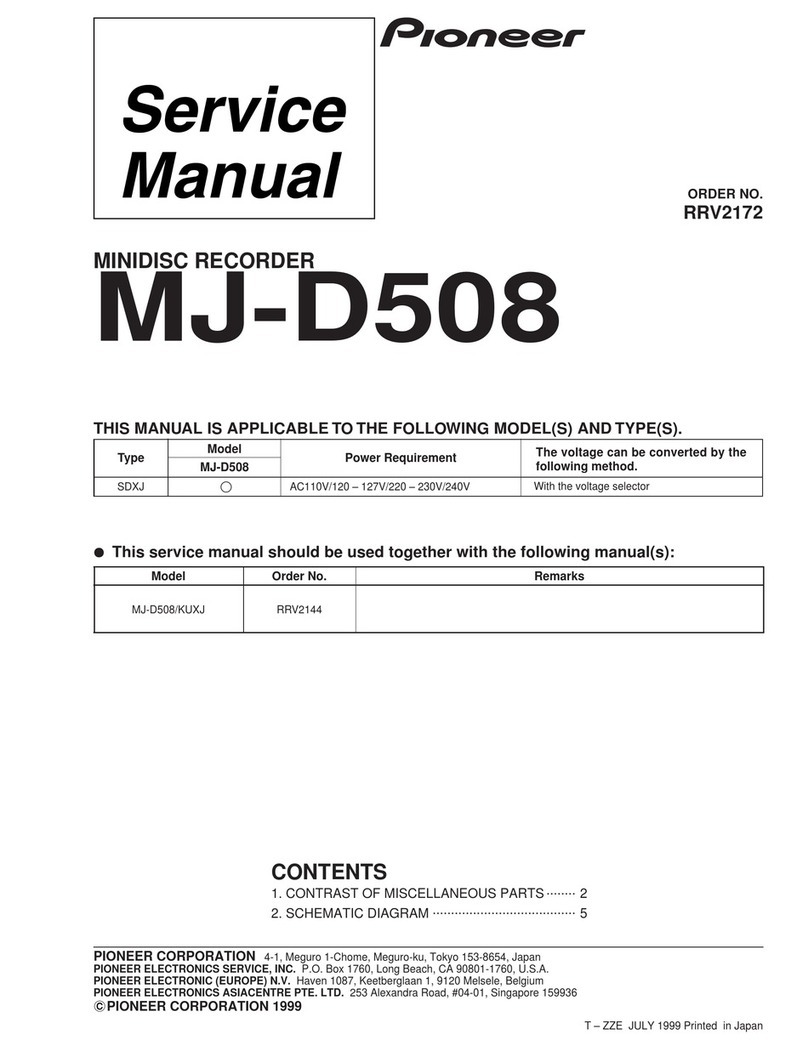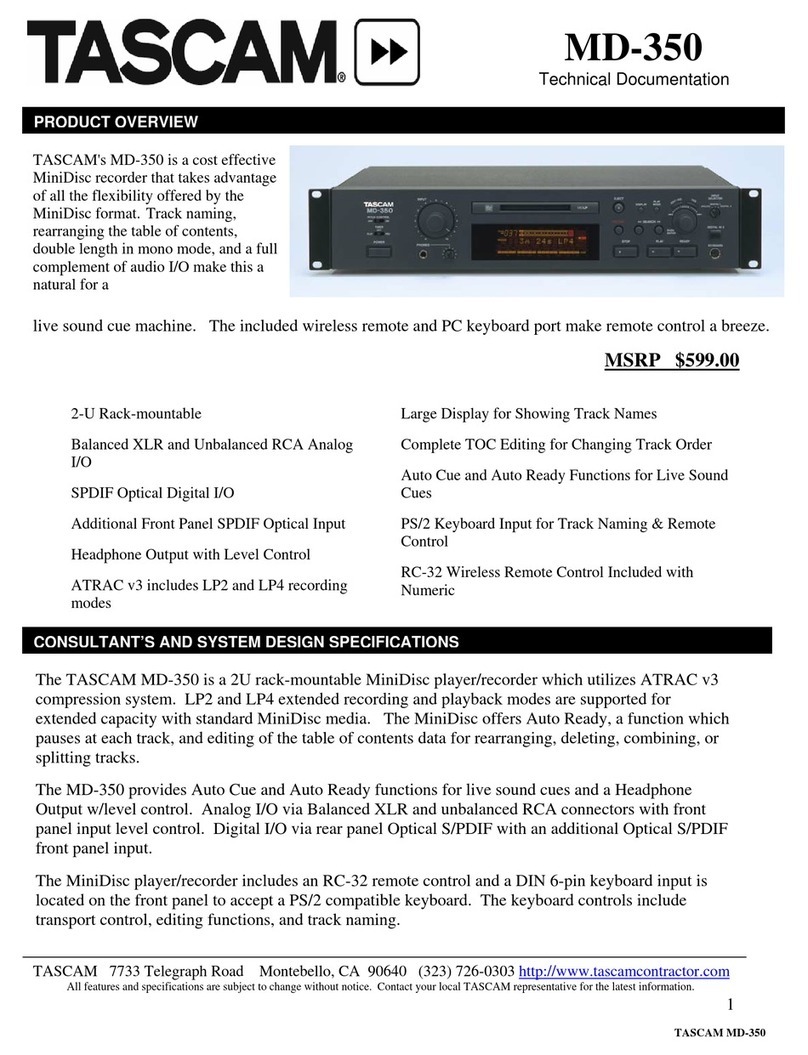
MDX-596
MDX-596
100718
SERVICE MANUAL
MDX-596
IMPORTANT NOTICE
This manual has been provided for the use of authorized YAMAHA Retailers and their service personnel.
It has been assumed that basic service procedures inherant to the industry, and more specifically YAMAHA Products, are already
known and understood by the users, and have therefore not been restated.
WARNING: Failure to follow appropriate service and safety procedures when servicing this product may result in personal
injury, destruction of expensive components and failure of the product to perform as specified. For these reasons,
we advise all YAMAHA product owners that all service required should be performed by an authorized
YAMAHA Retailer or the appointed service representative.
IMPORTANT: The presentation or sale of this manual to any individual or firm does not constitute authorization, certification or
recognition of any applicable technical capabilities, or establish a principle-agent relationship of any form.
The data provided is believed to be accurate and applicable to the unit(s) indicated on the cover. The research, engineering, and
service departments of YAMAHA are continually striving to improve YAMAHA products. Modifications are, therefore, inevitable
and specifications are subject to change without notice or obligation to retrofit. Should any discrepancy appear to exist, please contact
the distributor's Service Division.
WARNING: Static discharges can destroy expensive components. Discharge any static electricity your body may have accumu-
lated by grounding yourself to the ground buss in the unit (heavy gauge black wires connect to this buss).
IMPORTANT: Turn the unit OFF during disassembly and parts replacement. Recheck all work before you apply power to the unit.
MINIDISC RECORDER
IC DATA . . . . . . . . . . . . . . . . . . . . . . . . . . . . . . . 25—34
BLOCK DIAGRAM . . . . . . . . . . . . . . . . . . . . . . . 35—37
TEST POINT WAVEFORMS . . . . . . . . . . . . . . . 38—39
PRINTED CIRCUIT BOARD . . . . . . . . . . . . . . . 40—46
MD VOLTAGES . . . . . . . . . . . . . . . . . . . . . . . . . . . . .47
SCHEMATIC DIAGRAM . . . . . . . . . . . . . . . . . . 48—50
REMOTE CONTROL TRANSMITTER . . . . . . . . . . .51
PARTS LIST . . . . . . . . . . . . . . . . . . . . . . . . . . . . 52—61
GREASE APPLICATION DIAGRAM . . . . . . . . . . . .62
■ CONTENTS
TO SERVICE PERSONNEL . . . . . . . . . . . . . . . . . 1—2
REAR PANELS . . . . . . . . . . . . . . . . . . . . . . . . . . . . . .2
SPECIFICATIONS . . . . . . . . . . . . . . . . . . . . . . . . . . . .3
INTERNAL VIEW . . . . . . . . . . . . . . . . . . . . . . . . . . . . .4
DISASSEMBLY PROCEDURES . . . . . . . . . . . . . . 4—6
ADJUSTMENT & TEST MODE . . . . . . . . . . . . . . 7—16
SPECIAL TEST MODE . . . . . . . . . . . . . . . . . . . . . . .17
ERROR DISPLAY . . . . . . . . . . . . . . . . . . . . . . . 18—19
TROUBLESHOOTING . . . . . . . . . . . . . . . . . . . . 20—24
+10
6
1
7
2
8
3
9
4
0
5
RNDM
S/F
PROG
A-B REPEAT
DISPLAY?! SCROLL
( ) ✽–&
ABC DEF GHI JKL MNO
PQR
SPACE
STU VWX YZ /
TITLE
SEARCH
SKIP
PLAY PAUSE STOP REC
REC
M-MARK MONO/ST
INPUT
CHAR. NUMBER DELETE SET
ER
TY
WDA SCD-P
SYNCTIME

